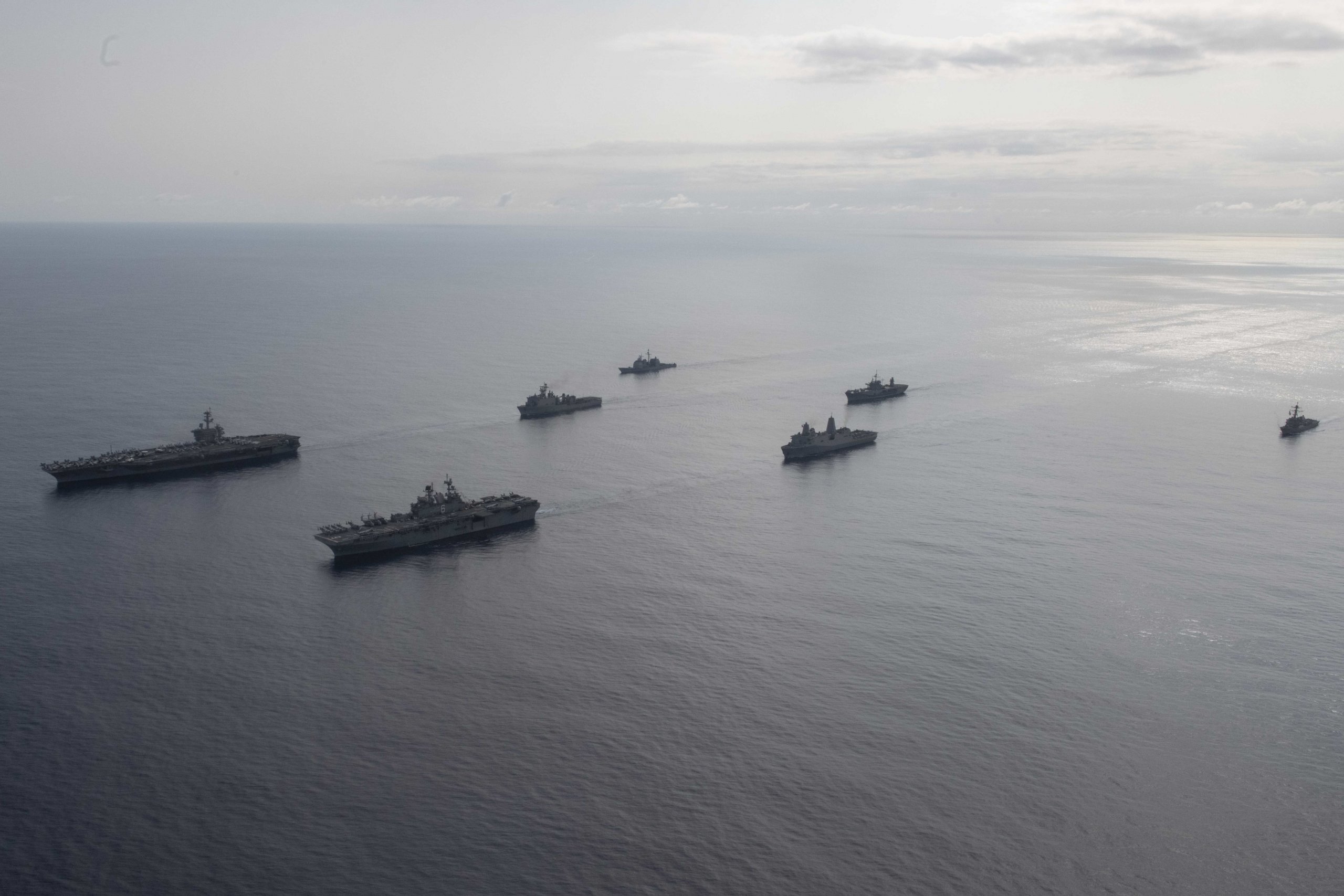Dear Readers,
The announcement by UK Prime Minister Boris Johnson in the House of Commons on Thursday 19 November that his government will spend an extra £24 billion on defence over the next four years was a surprise to many.
Increasing the defence budget in the middle of the global COVID-19 pandemic, which is forcing the UK government into its highest national debit since the 1960s, may seem like a strange decision, yet it too is being driven by economic threats.
Having just virtually attended SMI’s Global MitSatCom conference (10-12 November), followed by the Air and Space Power’s Defence Space 2020 conference (17-18 November), it is clear that the UK is preparing to step up its commitment to space, both commercially and in terms of defence. The perceived threat not only to physical satellites in space, but also the potential to disrupt economic activity that is absolutely reliant on space connectivity is real and growing.
At the end of Boris Johnson’s list of financial beneficiaries came three very important commitments that are almost certain to shape defence spending for the next few decades: the standing up of a new RAF Space Command, the establishment of a National Cyber Force, and a centre for the development of Artificial Intelligence.
One comment made during the conferences was that “war could be started, conducted and ended in space” without any kinetic activity occurring on earth. The element of a traditional mass attack by ground forces is rapidly receding into the rear view mirror. With the population of satellites set to multiply by tens of thousands over the next 10-20 years, another comment made was that where one area of the earth might be photographed three to four times a day before, in the not so distant future that could happen every second.
Any bets that the first fully armed space vehicle will be named the Enterprise?
Editor

US NAVY SECRETARY LOOKS TO BOOST STRENGTH IN INDO-PACIFIC BY RESURRECTING 1ST FLEET
“We want to stand up a new numbered fleet. And we want to put that numbered fleet in the crossroads between the Indian and the Pacific oceans, and we’re really going to have an Indo-PACOM footprint,” said Navy Secretary Kenneth Braithwaite speaking on 17 November at the Naval Submarine League’s annual symposium.
“We can’t just rely on the 7th Fleet in Japan. We have to look to our other allies and partners like Singapore, like India, and actually put a numbered fleet where it would be extremely relevant if, god forbid, we were to ever to get in any kind of a dust-up,” added Braithwaite.
The original first fleet was founded to patrol the western Pacific on 1 January 1947 and was operational until being disbanded on 1 February 1973.
Braithwaite’s intent to stand-up the 1st Fleet has been several months in the making, according to USNI News, with former Secretary of Defense Mark Esper reportedly in support of the idea. He stated that during a recent trip to the Far East “every single one of our allies and partners are concerned about how aggressive the Chinese have been.”
The operational pressure on the Japan-based 7th Fleet, whose area of responsibility stretches from the International Dateline to around the India-Pakistan border, has been a cause for concern in the Navy for some time. A second fleet would not only boost the US Navy’s presence in this increasingly contested maritime region, but would allow better integration with existing and potential allies in order to check the Chinese Navy’s further maritime expansion.
MANAGING AND PROTECTING MRO ALONG DISPARATE END-TO-END SUPPLY LINES DURING THE PANDEMIC
The COVID-19 pandemic has had some negative effects on US military maintenance, repair and overhaul (MRO) operations – but also some positives.
Speaking during a FEDInsider webinar on 17 November, Brian Laird, assistant commander for Supply Chain Technology and Systems Integration, Naval Supply Systems Command (NAVSUP), whose command oversees a $3.8 billion inventory, said that despite ‘hiccups’ in the end-to-end process, such as an initial slowdown in parts delivery, “ productivity loss over long term has not been that bad.” He added that the Coronavirus Aid, Relief, and Economic Security (CARES) Act, had been supportive of companies and workers along the supply chain.
Laird praised the Control Tower Concept, where intelligent software helps to convert large amounts of data into usable information. This can be applied to one supply chain or between multiple supply chains. He said that NAVSUP had done this with the US Navy’s FA-18s and the organisation was further examining how “data can be infused into decision making” that would give a better overview of the requirement for high priority parts.
“COVID has shown a light on the need to work better with vendors” to have a better understanding and visibility of their world, as well as giving vendors better access into ‘programmes of record.’ However, this also meant improved identity management and data protection, particularly in the rise of remote accessing by workers in the supply chain. “There is always a healthy tension between access to data and the importance of confidentiality,” he said.
Bob Osborn, chief technology officer, with ServiceNow, a company delivering digital workflows said that there was a “complexity within the US Department of Defense’s (DoD) systems of record in different organisations and commands.” He added that many of the processes were dedicated to support their individual organisations within defence. This resulted in a significant complexity when joint operations where being conducted – from the strategic to tactical theatres. However, Osborn suggested that “learning scrips could help to paint a picture of context,” with technology recognising patterns.
Osborn also highlighted the need for defence to be aware of who was accessing and making changes to its systems, particularly in a disparate environment. The pandemic had increased “people using different systems at different locations at different times of the day,” adding that security of information had to be paramount especially when the workforce is dispersed in such a way.
CANADA, ROMANIA AND AUSTRALIA JOIN NATO MARITIME UNMANNED SYSTEMS INITIATIVE
On 20 November, Canada, Romania and NATO partner Australia joined the Maritime Unmanned Systems Initiative which was launched in October 2018. Other NATO members include: Belgium, Denmark, France, Germany, Greece, Italy, the Netherlands, Norway, Poland, Portugal, Spain, Turkey, the United Kingdom and the United States.
According to a NATO statement, “the Maritime Unmanned Systems Initiative allows participants to work together on all aspects associated with introducing unmanned systems into their navies.”
NATO Assistant Secretary General for Defence Investment Camille Grand stated that new unmanned technologies were developing into a “game-changer in countering multiple threats in the maritime domain.”
So far the Initiative has led to operational experimentations, work with the private commercial sector on innovation and the further development of specific capabilities.
US MAJOR ARMS SALES
No updates since 10 November.
US GOVERNMENT CONTRACTS
Highlighting a selection of $100 million+ government awarded contracts awarded between 16-13 November and Foreign Military Sales contracts.
20 November
US TRANSPORTATION COMMAND
Four additional companies – Alaska Airlines; Hawaiian Airlines; Jet Blue Airways; and Swift Air – have been awarded IDIQ contracts under the Domestic Airlift Charter Services, Federal Aviation Administration Part 121 at estimated program value of $697 million. The contracts provide domestic air cargo and passenger charter services. Services shall be provided for the Department of Defense and other federal government agencies. The US Transportation Command is the contracting activity.
DEFENSE LOGISTICS AGENCY
Sysco-Central Alabama has been awarded a maximum $136 million IDIQ contract for full-line food distribution. Using customers are Air Force, Army, Marine Corps, Coast Guard and federal civilian agencies. The contracting agency is the Defense Logistics Agency Troop Support.
19 November
WASHINGTON HEADQUARTERS SERVICES
American Systems; Applied Research Associates; and Modern Technology Solutions, have been awarded an IDIQ contract with a maximum amount of $496 million. This requirement will provide the range of research, development, test and evaluation technical and engineering services required to assist the Office of the Under Secretary of Defense for Research and Engineering in accomplishing its mission to create innovative warfighting technologies and advanced capabilities required to maintain US technological superiority. Washington Headquarters Services is the contracting activity.
DEFENSE LOGISTICS AGENCY
Vermilion Valley Produce has been awarded a maximum $265 million IDIQ contract for fresh fruits and vegetables. Using customers are Army, Air Force, and Department of Agriculture schools. The contracting agency is the Defense Logistics Agency Troop Support.
US AIR FORCE
Journey Construction I; Pace-Amtex JV; GMA Construction Group; Pro-Mark Services; and Sea Pac Engineering, have collectively been awarded a $150 million IDIQ multiple award construction contract. The 7th Contracting Squadron is the contracting activity.
L-3 Technologies has received an $18 million contract modification for an additional engineering effort. This modification provides for additional non-recurring and recurring engineering required to develop and install structural reinforcements to the aircraft. This contract involves 100 percent Foreign Military Sales (FMS). The total cumulative face value of the contract is $273 million. The 645th Aeronautical Systems Group is the contracting activity.
US NAVY
Marine Group Boat Works is awarded a $48 million modification contract in support of the government of Jordan for two 37-meter patrol boats, communications equipment and other technical assistance. Foreign Military Sales (Jordan) in the amount of $48 million will be obligated at time of award. This contract is for two 37-meter Patrol Boats, communications equipment and other technical assistance for the Royal Jordanian Navy. The Naval Sea Systems Command is the contracting activity.
US AIR FORCE
Insitu is awarded a $9 million modification order. This modification definitises pricing and exercises options for the procurement of 15 ScanEagle unmanned aerial vehicles, nine ScanEagle payloads, and three spares lots needed to provide the Afghanistan National Army (ANA) intelligence, surveillance and reconnaissance capabilities, and support current ANA ScanEagle efforts. Foreign Military Sales funds in the amount of $9 million will be obligated at time of award. The Naval Air Warfare Center is the contracting activity.
18 November
US ARMY
Hydrogeologic; Cape Environmental Management; Environmental Chemical; Bhate Environmental Associates; Bay West-Ahtna JV; Bristol Environmental Remediation Services; Kemron Environmental Services; and North Wind-CDM JV, will compete for each order of the $176 million hybrid contract for environmental remediation projects. The US Army Corps of Engineers is the contracting activity.
DEFENSE HEALTH AGENCY
Logistics Health was awarded a $162 million modification contract. This award, titled “Reserve Health Readiness Program,” provides health readiness support services to the military service components to meet medical and dental standards essential in maintaining a deployable force. Services include immunisations, physical examinations, periodic health assessments, post-deployment health reassessments, mental health assessments, dental examinations, dental treatment, laboratory services, and other services as required to satisfy military service component health readiness needs. The work will be performed in every US state, US territory, the District of Columbia, and Germany.The Defense Health Agency is the contracting activity.
17 November
US NAVY
General Dynamics Information Technology has been awarded a $49 million modification to previously awarded, IDIQ contract that provides integrated logistics support services for Foreign Military Sales customers using Navy procured defence articles including weapon systems, various aircrafts and other components in support of the International Sustainment Department and the Naval Air Systems Command. The Naval Air Warfare Center is the contracting activity.
16 November
US NAVY
General Dynamics is awarded a $146 million modification contract for DDG planning yard services. The Supervisor of Shipbuilding, Conversion and Repair is the contracting activity.
US ARMY
General Dynamics Land Systems was awarded a $25 million modification contract to provide maintenance training and procedural technical assistance to the Kuwait Land Force. Fiscal 2010 Foreign Military Sales funds in the amount of $25 million were obligated at the time of the award. The US Army Contracting Command is the contracting activity.
MISSILE DEFENSE AGENCY
ARES Technical Services is being awarded a $51 million contract for Technical, Engineering, Advisory, and Management Support (TEAMS) – Next Safety advisory and assistance services. Fiscal 2021 research, development, test and evaluation; and Foreign Military Sales funds in the amount of $2 million are being obligated at time of award. The Missile Defense Agency is the contracting activity.
EVENT STILL CONFIRMED
No further confirmations.
EVENT RESCHEDULE
29 Nov – 2 Dec 2021, Egypt Defence Expo (EDEX), Cairo, Egypt.
Originally scheduled for 7-10 Dec 2020.
The second edition of EDEX was originally scheduled to take place in the period from 7th – 10th December 2020 at Egypt International Exhibition Centre and under the patronage of His Excellency, President Abdel Fattah El Sisi, The President of The Arab Republic of Egypt and The Supreme Commander of the Egyptian Armed Forces. The exhibition was anticipating more than 400 exhibitors from around the world.
Keep safe and healthy everyone.
Andrew Drwiega
Editor-in-Chief
Armada International / Asian Military Review














